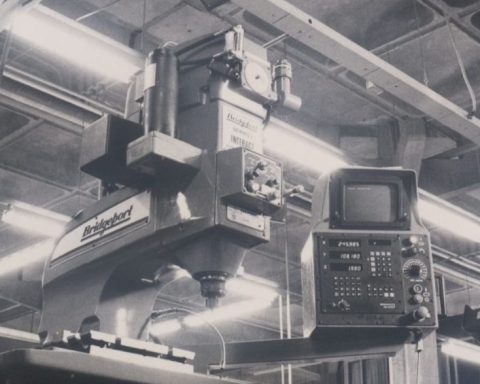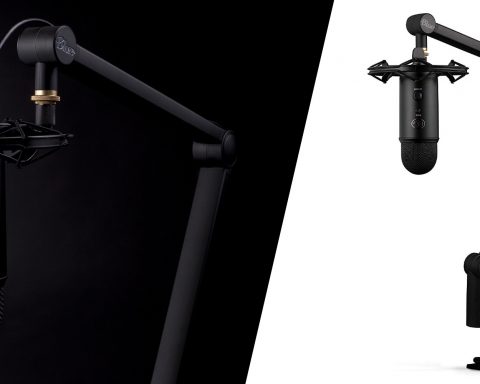Ahh, a deck. The perfect place to hold family reunions in the summertime, have casual drinks with friends anytime, spend time with your sweetheart underneath the stars, or chill with a nice thick book and glass of lemonade (or cabernet) on quiet evenings.
Whether you’ve just had a deck installed or plan to DIY soon, there’s at least one thing that all woodworking projects have in common: you’re going to need a sander sooner or later.
Anytime we talk about power tools, things have the potential to get murky. But in this article, I’ll do my best to provide you with all of the information you need to make an informed sander purchase. But first…
How to Build a Deck
Believe it or not, spring is on the way and summer is right on its heels. That means fresh, breezy mornings, delightful afternoons filled with family fun, and long evenings that draw on till eight or nine p.m. in the company of friends and loved ones. What better way to savor the coming seasons and entertain guests than with a brand-new deck?
While this is a time-consuming task and requires some attention to detail (and a whole lot of patience), it’s absolutely worth every second and penny spent. To keep things simple for the sake of this article, here’s a quick breakdown of how to make your very own deck. Feel free to click on the provided links to learn more about how each step works.
Clear the Porch
This step is pretty self-explanatory. You’ll need to clear away everything that is currently on or near your porch.
Remove Concrete
The next step is to get all of the concrete removed. This might be the most strenuous step, but Homedit has a few tips to make the process go smoother for you. Using only a pry bar, a sledgehammer, and a high lift jack (and maybe a second set of hands) you can have the concrete removed by day’s end.
Make the Concrete-Mounted Frame
Depending on your preferences and where exactly your deck will be built, you can make a concrete-mounted frame. Essentially, this means that you’ll secure the frame right onto the concrete of your existing steps and along the side of your house. This can be done using a rotary hammer drill and just a few other tools. See Homedit’s dedicated project page to learn the specifics!
Prepare the Footings
Of course, not all of your intended deck area is going to be next to concrete. To finish making the frame, you should prepare footings. Homedit suggests a simple method: dig an appropriately sized hole, insert a concrete form, place the lumber piece inside, pour in concrete mix, and let it set. Do this for each footing you’ll need.
Build the Deck Frame
Using the concrete-mounted frame and footings, you’ll begin building the deck frame. This is a complex process with many steps, but the gist is that you’ll end up with pieces of lumber extending from one end of the framing to the other. These lumber pieces will be fastened in key areas to shorter lumber pieces, which will be positioned vertically to hold the actual floor.
Install the Deck Joists
The deck joists will run perpendicular to the deck flooring and will be the main component supporting it. The core concept here is that these perpendicular boards will be secured to the frame using brackets and nails. You can find all of the details you need in our dedicated article. Good news: This is the final step before you install the flooring!
Install the Flooring
The glorious moment has arrived: it is time to start installing the flooring. But before you get too excited, pace yourself. You’ll need to ensure that your framing is done correctly and take a few measurements before getting started. To learn the best method for how to lay your deck flooring, see our detailed article. (Alternatively, you can read up on how to install the flooring if your deck will be curved.)
Install the Deck Trim
All you need to install the deck trim are a few basic tools and some key measurements. Adding the trim will enhance the overall appearance of your deck, giving it a clean and “finished” look.
Stain and Seal the Deck
You’ve hung in there all this time, huh? Then you more than deserve the honor of putting the final stain and sealant on your deck! A stain goes a long way toward adding color and character to your deck, working together with the sealant to protect it from UV rays and other environmental elements.
Pros and Cons of Sanding the Deck
A common concern many people have before staining their deck is whether it needs to be sanded or not. The consensus is that you should absolutely do so! That said, you should be aware of the pros and cons associated with deck sanding so you can prepare for the project in advance.
Pros
- Prevents wood splinters from forming
- Sands off any damaged or discolored wood
- Gets rid of the old stain color
- Provides better results than the chemical stripping alternative
Cons
- Involves a lot of prep work and cleanup
- Can cause gouges in wood if using a rough grit
- Can negatively affect absorption of the new stain
- Is a time-consuming task
Keep in mind that you can avoid or offset most of the cons by using the proper tools and techniques!
How to Choose a Deck Sander
Now that we’ve (hopefully) convinced you to purchase a dedicated deck sander, you’re probably wondering how to choose the best one for your project. Because deck sanders come in many types and with varying features, there is an overwhelming selection on the market today—but not to fear! We’ve compiled a practical list of characteristics to consider before buying.
Type
One of the first things you’ll want to determine is which type of sander you’ll need. To help you make this critical decision, here is a little information on the three sander types we’ve mentioned.
Belt Sander
Belt sanders are perhaps the most useful tool for deck sanding. They work in a linear fashion to provide a clean finish and work wonders on rough or coarse wood surfaces—like your deck! In addition, belt sanders are known for their versatility. This means that even after your deck sanding project is over, you’ll be able to find other uses for your new belt sander in the future.
Orbital Sander
As opposed to belt sanders, orbital sanders are ideal for finish work rather than rough work. The orbital sander features a square foot, which makes it perfect for sanding in otherwise hard-to-reach corners or edges. In addition, the orbital sander is known to remove less of the surface material a belt sander would.
Random Orbit Sander
Random orbit sanders are known for their round shape and the random oscillating motion they use to remove wood. This type of sander has a lot to offer: more material removal than orbit sanders but less than belt sanders, less impact on the wood grain, and a more user-friendly design. However, they tend to be more expensive than their orbital cousins, and they are not ideal for sanding corners or edges.
Features
Depending on the type (or types) of deck sander you decide to purchase, there are a few features you should look for.
Dust Collection
Sanding, by nature, produces a lot of dust. One way you can avoid a huge sawdust mess is to purchase a sander that has a dust collection unit built in. The unit will collect a good amount of the dust while sanding so there’s less of the stuff floating around in the air (which is a health hazard, by the way!).
Variable Speed
Sanding projects are not one-speed-fits-all, so investing in a sander that has multiple speed options is a great idea—better still if it’s easy to switch between speeds while sanding!
Power Options
In a similar vein, you’re going to want different levels of power depending on what you’re sanding. Spending a little extra cash on a sander with different power options will save you a lot of frustration later.
Tracking Window
A tracking window allows you to see the area of the wood you’re sanding, while you’re sanding it. This is convenient for so many reasons, chiefly in that you can worry less about over-sanding.
Comfort
Survey says that sanding…kinda sucks. But you can make your deck sanding experience just a tiny bit better by opting for a sander that’s comfortable to use. Make sure the product you purchase is relatively light in weight, features a user-friendly design, and has other comfortable amenities such as an ergonomic grip. Emotionally, you might be ready to kick the bucket by the time you’re done sanding—but your hands and muscles will feel great.
Noise Level
If you’re the kind of person who goes months without vacuuming because you hate turning it on, pay attention here! Unfortunately, many sanders (and power tools in general) lean toward the excessively loud end of the spectrum. Make sure you check the noise level on any sander you’re thinking of purchasing, and opt for one with the least amount of volume. Most belt sanders can reach volumes of 103dB(A), while orbital and random orbit sanders tend to hang around 85dB(A).
Budget
As with any major purchase, you need to consider your budget before setting out to buy your new sander. In many cases, the price of a sander correlates to the item’s quality as well as how reputable the brand is. For a belt sander, you can expect a median price of around $150 with higher-end models costing more and lower-end models costing less. A quality orbital sander will cost you upwards of $50, while a random orbit sander can range anywhere from $35 to $300.
Check Out These Awesome Deck Sanders
Alrighty. You now have all the information you need to build a deck, know which types of sanders are best for sanding it down, and are aware of what factors to consider before making a purchase. That means you’re ready to dive in and see our top picks!
1. BLACK DECKER Mouse Detail Sander
It should come as no surprise that BLACK+DECKER has created such a user-friendly sander. Its Mouse Detail Sander, featuring 1.2 amps of power and 1400 orbits per minute, is perfect for small sanding projects or detail work. Its compact and lightweight design further adds to its ability to provide a nice finish, as it’s comfortable to use and can reach those hard-to-get-to corners with ease.
Throw in its ergonomic handle (which provides three possible gripping positions), its dust collection unit, and its included sanding pads and finger attachment, and you have one heck of a sander. Best of all, it comes with a two-year limited warranty and won’t break the bank!
2. SKIL 7510-01 Sandcat 6 Amp 3-Inch x 18-Inch Belt Sander with Pressure Control
Anyone who has sanded before knows how easy it is to press down a little too hard and end up with a worse problem than you started with. The folks at SKIL know this too, which is why they’ve created a practical belt sander that employs a pressure control system.
This system gives an alert any time you start applying excess pressure, so you’ll never again have to worry about damaging the wood while sanding. Its 6 amps of power make it quite the powerhouse for all your belt sanding needs, and its auto track belt and dust collection unit will make each and every sanding experience so much easier for you. And all of this convenience is at such an affordable price for the quality…what are you waiting for?
3. DEWALT Random Orbit Sander
As per the norm, DEWALT has crafted yet another tool keeping the end user firmly in mind. Everything about this random orbit sander ensures comfort and ease of use, from its short stature for extra user control to its easy-to-lock dust bag. This bad boy boasts a moderate 3 amps of power and an OPM range of 8000 to 10,000, lending it more than enough power to get that detail work just right.
If you have a large project up ahead or plan on using this product often, you’ll certainly appreciate the efforts taken to minimize vibration and keep the user—you—feeling up to the task with reduced fatigue. Oh, and it comes with convenient carry bag. What more could you ask for?
4. Makita 9403 4″ X 24″ Belt Sander
If you’ve done any research before coming to this article, you’ve probably seen the name Makita come up quite a few times. That’s because, quite frankly, it is the best of the best in so many categories! Considering its 11 amps, 4-inch belt, and crazy-fast removal rate, you may be surprised to find out that it’s one of the quietest belt sanders on the market at 84 decibels (about the same noise level as a diesel truck, but still…).
Its motor is kept safe from dust buildup via its labyrinth design, it has a cleverly placed grip on the front for comfort and control, and it comes with a one-year warranty. I mean, come on. If you’re a professional in any woodworking field, you have to get this.
5. TACKLIFE 5-Inch Random Orbit Sander
Affordable, attractive, compact, comfortable…need I go on? This 5-Inch Random Orbit Sander from TACKLIFE does more than get the job done: it gets it done well, while providing you with all of the comfort and maneuverability you could need. It runs at 3 amps with an OPM of 13,000 and it features six different speed settings so you can choose the best option for your current project.
When you add in its effective dust collection unit, ergonomic rubberized grip, and vibration reduction, you have yourself a sander you’ll just love to use! Finally, you’ll appreciate that it comes with twelve sandpaper pieces (half of them 80-grit and half 180-grit), which is one less thing you’ll have to buy. The reviews speak for themselves—see why others are raving about this random orbit sander and try it out for yourself!
Frequently Asked Questions
If you’ve never sanded a deck before or are still new to the DIY game, you probably have some questions. To give you a hand, we’ve answered a few of the most frequently asked questions for you!
What type of sander do you use to sand a deck?
As mentioned above, there are three main types of sanders used for deck sanding: belt sanders, orbital sanders, and random orbit sanders. Of these, professionals tend to lean toward belt sanders as they offer plenty of power and make for a more efficient sanding process. Some people prefer to use a palm sander as well for the finish work.
Can you use a floor sander on a deck?
Floor sanders are not an ideal option for sanding decks. Though it may be tempting to use a floor sander—especially if you happen to have one on hand already—it’s much better to spend the money on a more suitable sander option. This is because floor sanders are specifically designed for use on flat surfaces; because the boards of your deck are curved, it will render the floor sander ineffective.
How can I sand my deck fast?
Unfortunately, there is no fast way to sand your deck. The typical deck-sanding job takes upwards of eight hours. The best way to speed up your sanding time is to use the proper tools and techniques.
Conclusion
We hope our article helped you get your DIY affairs in order and gave you a better idea of which sander is best for your upcoming project. Any of the products we listed will be a fantastic addition to your tool collection, but you can always keep looking if you haven’t found your perfect match yet. Remember: Taking the time and effort to find the best deck sander for you will pay off big in the end. Good luck!
The post Ensure Your Deck is Smooth with the Right Sander appeared first on Home Decorating Trends – Homedit.
























